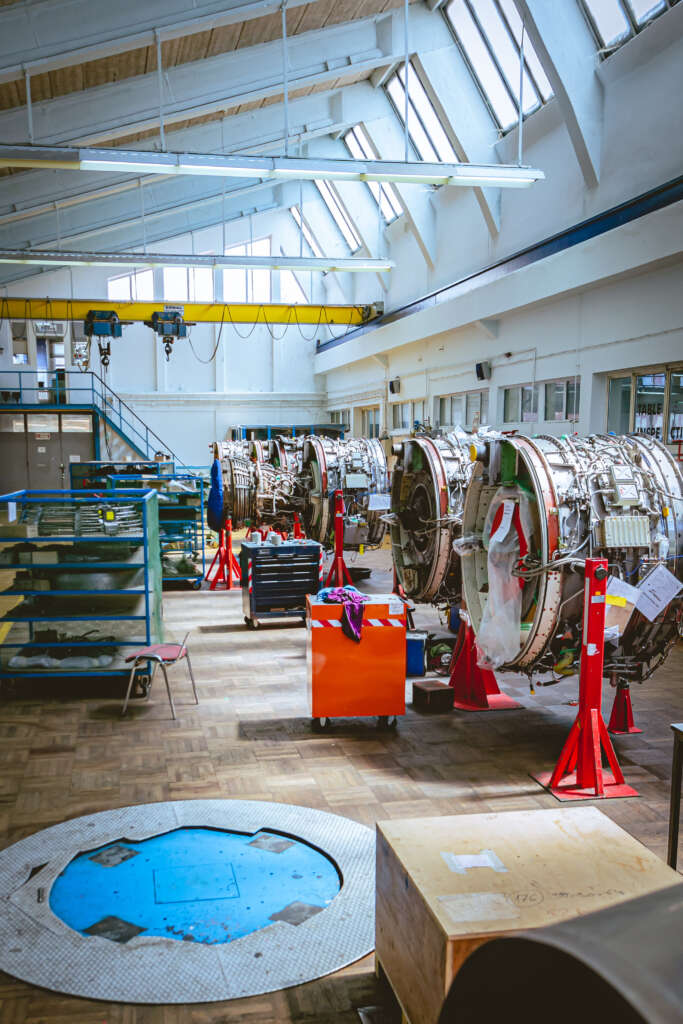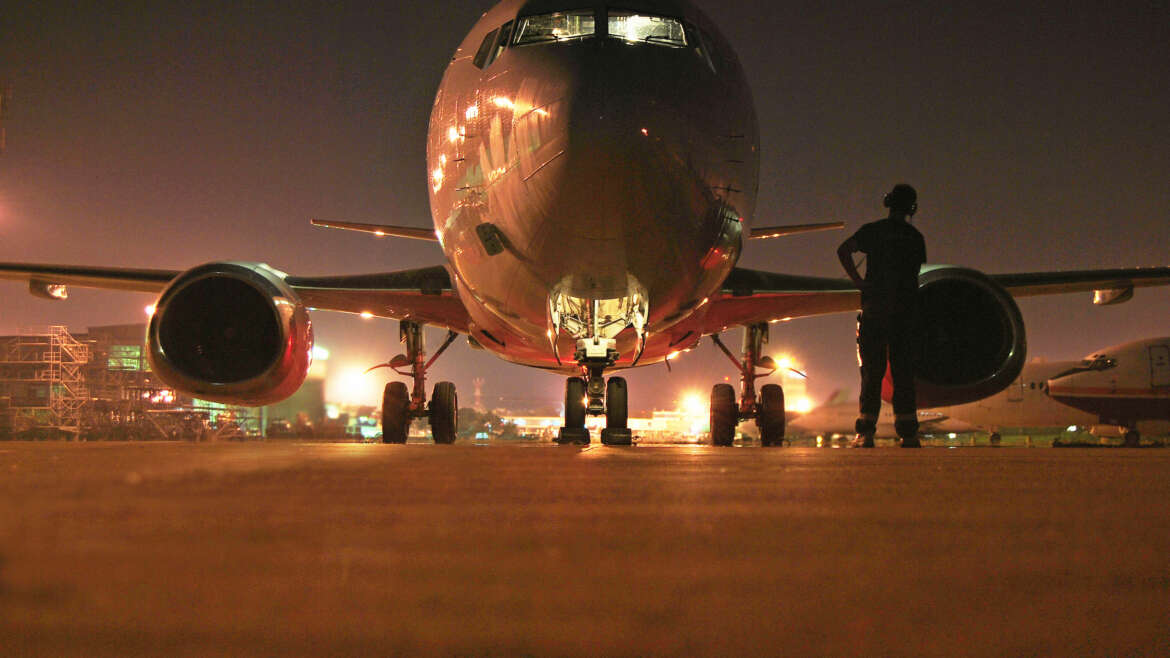On that 15th February 1928, a French plane Potez 29-2, under the name “Belgrade“, took to the skies, under the command of Tadija Sondermajer, aircraft engineer, aviator and hero of the Serbian liberation wars. Sondermajer and co-pilot Vladimir Striževski fired up the engines of the plane that took off at 9 am from the “runaway“, or should we say a reworked meadow on the territory of today’s New Belgrade. The first passengers, of course, were journalists and photojournalists, with the five of them coming from Belgrade media scene.
“Wheels hurl mud in all directions,“noted Politica’s journalist, “as we climb and our plane leans into a spin, it seems to us that we have not tilted, but rather that the whole of Belgrade has slanted to the side and will plunge into the Sava river.” After a two-hour flight through cloudy weather, the plane landed at Borongaj Airport, but not before making a couple of laps above Zagreb. It was greeted by a large number of citizens and representatives of the authorities, and that same afternoon saw a group of Zagreb journalists fly to Belgrade. The planes flew the Belgrade-Zagreb route every day except Sundays, all the way until November, when winter weather conditions led to the suspending of air traffic. And the response of the passengers’ was greater than expected, despite the high price of tickets and their fear of flying.
The aviation industry has shown significant potential
It was just two years earlier that the idea of establishing an air transport company had been born. The idea was interesting, but risky, since the distrust in the kind of novelty represented by the plane was great. The first successful “aeroplane” flight had taken place just 24 years earlier. It covered a distance of 37 metres and lasted 12 seconds. The Aero-club raised only 10 percent of the funds required. Then Sondermajer launched what we would today refer to as a “promotional” flight from Paris to Mumbai (than known as Bombay) and then to Belgrade. His efforts bore fruit, with shareholders realizing that the planes might have a future and deciding to invest the remaining money. The first four planes were purchased.

And so, exactly 95 years ago, Aeroput and the first aircraft maintenance division, one of the few in Europe at the time – which paved the way for the establishment of JAT Tehnika, was founded.
Almost a century has passed since the first French Potez 29-2 aircraft to the most modern aircraft of major global companies that are serviced today at JAT Tehnika. With the development of technology and the country, the company itself grew and prospered. Thus, in 1947, engineers installed a new instrument landing system (ILS) on a DC-3 aircraft. Then, in 1965, the then aircraft maintenance department got a new hangar and workshops. On December 10, 1969, JAT received a certificate from the US aviation agency FAA, i.e. an official permit to carry out all types of repairs on the aircraft. In 1975, JAT’s technical department began to maintain aircraft of foreign companies. This department of JAT then became capable of performing complete line maintenance and major inspections on the following aircraft types: DC-9 and B-727 (A,B,C,I,D); B-737 (F,CF) and DC-10 (A,C); ATR-72 (A, I).
New aircraft types give JAT an edge
Continuing on the path of success, the then JAT and Paris-based SNECA the French national company for the study and manufacture of aircraft engines) signed an agreement on the joint construction of an aircraft engine test cell on March 20, 1987. With the construction of a new engine test cell, a part of technical operations at Belgrade Airport, JAT created the conditions to conduct engine tests of every engine in the skies and opening JAT to new possibilities. The Engine Test Unit was qualified to repair, modify and analyze PW JT8D-9-15/17 engines, as well as to perform minor modifications to CFM 56-3A engines.

After that, JAT faced many problems from which it emerged victorious. The 1990s were difficult both for the entire country and for JAT, which suffered heavy losses due to sanctions, war, reduced market and banned flights to many destinations. These unfavorable conditions on the market took their toll and the company had a hard time doing business.
JAT rises from the ashes of war
After the sanctions, it was time to catch up with the rest of the world. JAT started flying to international destinations in October 1994. To facilitate the return, JAT was given back the slots it had before the sanctions. All this indicated the trust that JAT continued to enjoy from its foreign partners – a trust that had been built up over decades and that had not been broken, despite the company’s absence from the public scene.
During a dramatic and difficult period, JAT managed to preserve all its resources – fleet, equipment and employees. The company managed to remain active even in wartime conditions. Despite the political instability in the country, inspections of the planes that remained in the country continued. The training center as well as many other services remained active. This durability has helped the company get to where it is today.
The department for the execution of technical works was the first within “JAT Airways” to receive the certificate of the Joint Aviation Regulations – (JAR) 145, by the inspection of the Hungarian aviation authorities. JAR 145 gave the technical works department the ability to become an independent unit that will operate both for the national airline and for other companies, generating independent revenues.
In 2004 and 2005, JAT faced mechanic strikes. Despite this, JAT received IATA Safety Certificate- IOSA, in February 2005. Thus, JAT received another recognition for achieving and maintaining internationally recognized aviation standards in the field of air traffic safety and fleet maintenance. The company passed the checks without a single negative point. This major achievement is linked to our goal of maintaining high quality and excellence.
JAT Tehnika becomes a separate entity – our current chapter
In order to improve the financial situation, the Government initiates the restructuring of the company. This led to the establishment of “JAT Tehnika d.o.o.” on July 1, 2005. After the separation, JAT Tehnika continued to maintain the aircraft of “Jat Airways”. JAT Tehnika was tasked with building a new image of the company, which helped it build new partnerships with new clients.
In order to keep up with the ever-changing industry, JAT receives a new contract related to the engine workshop, which doubled the previous capacities. In the same year, JAT secured future contracts with a Russian airline for the maintenance of a large number of aircraft.
In July 2019, the Government of Serbia announced a tender for the sale of the company’s shares. On November 28, 2019, the Government of Serbia accepted the offer of the Czech-Polish group “Avia Prime” for the purchase of the company. JAT Tehnika joined the sister companies of the Group, “Linetech” from Poland and “Adria Tehnika” from Slovenia. The merger of JAT Tehnika made the “Avia Prime” group an MRO (organization for maintenance, repair and overhaul of aircraft) providing a common service to airlines with different types of aircraft, expanding the group’s portfolio to include, among other things, ATR maintenance. On the other hand, JAT Tehnika gained access to the Group’s clients, as well as greater capacity utilization, such as the engine workshop, from Linetech and Adria Tehnika. This acquisition marked a new chapter for JAT and the Avia Prime Group, which continues to provide excellent service in the world of aircraft maintenance.

